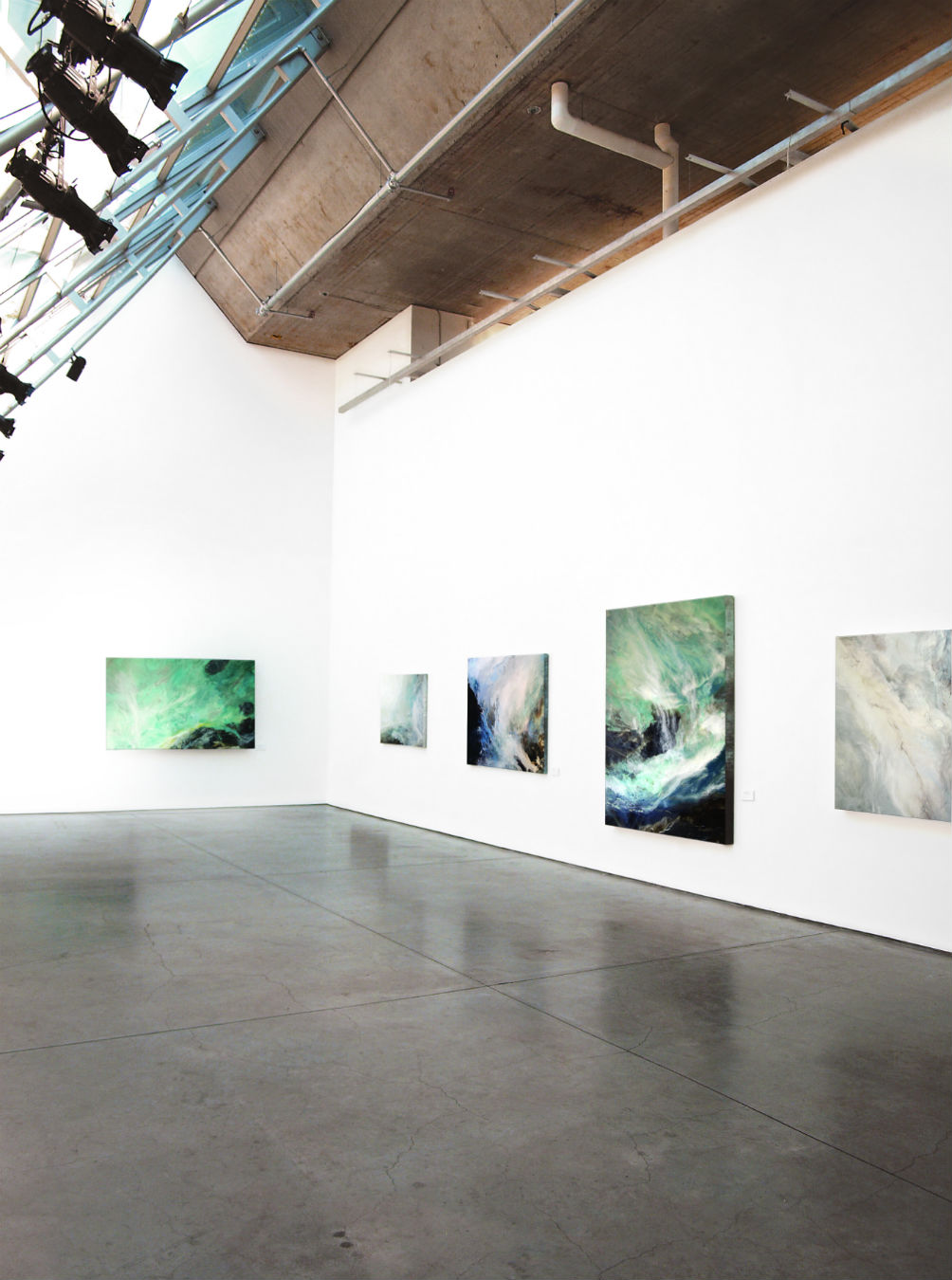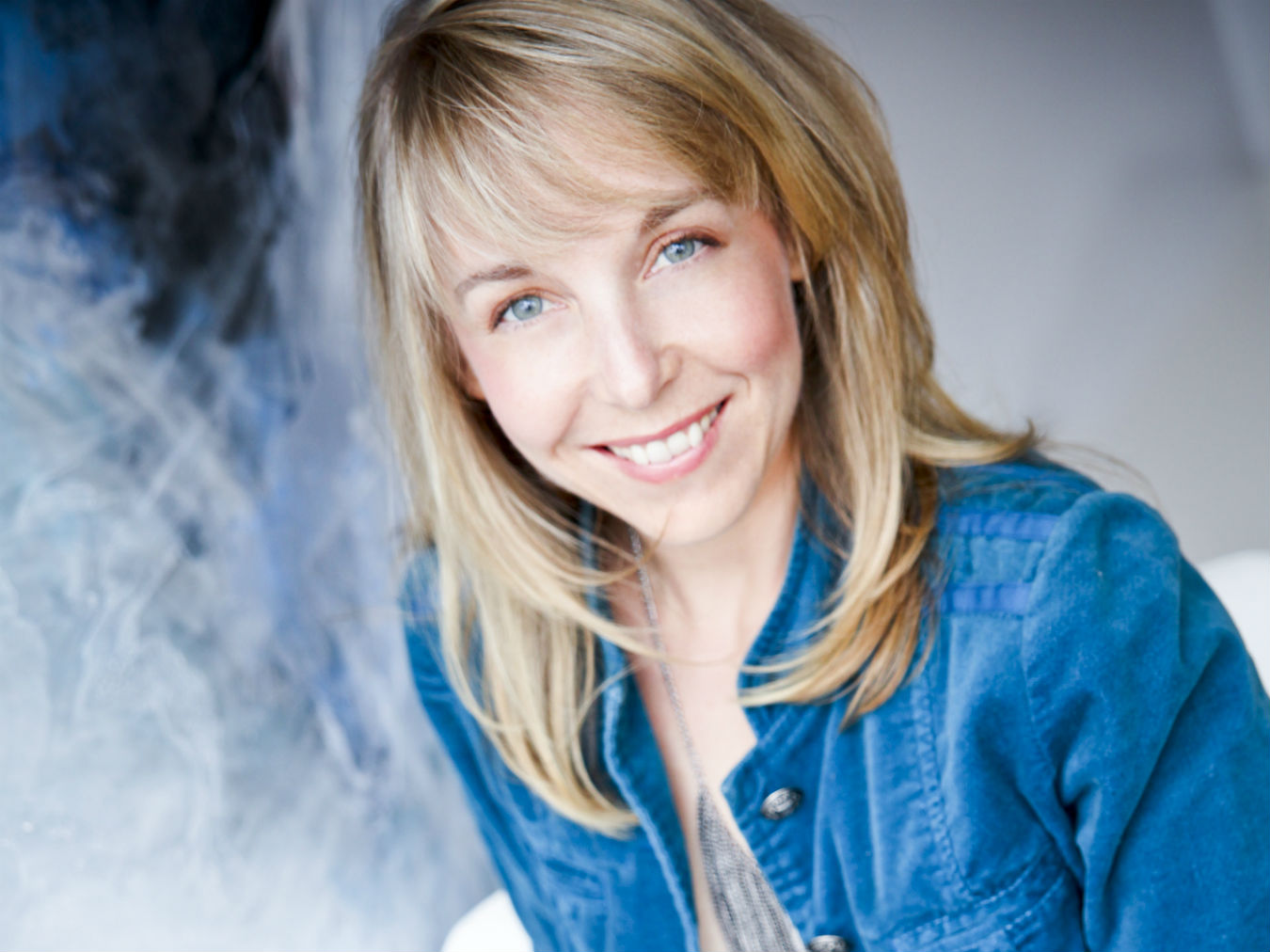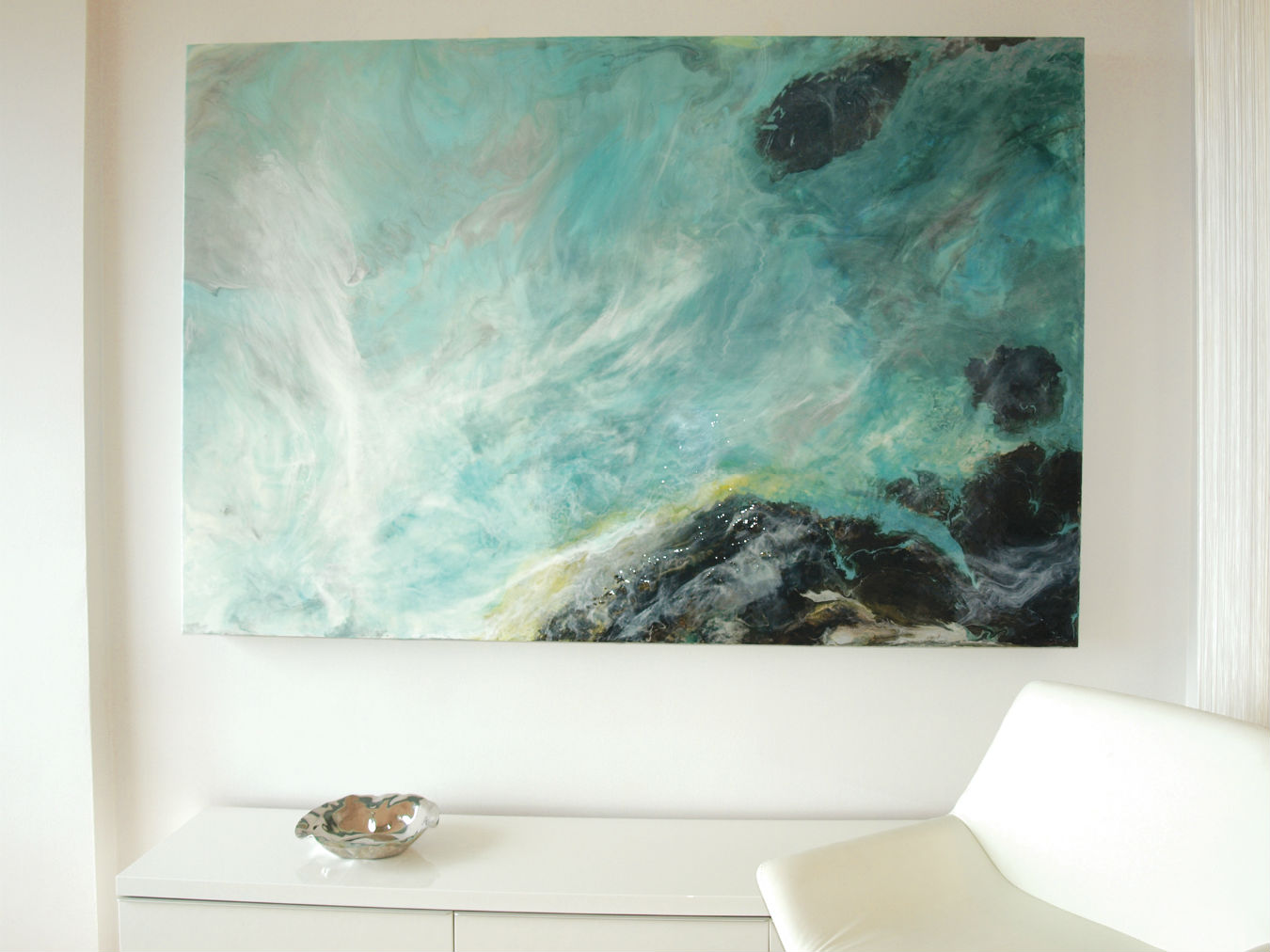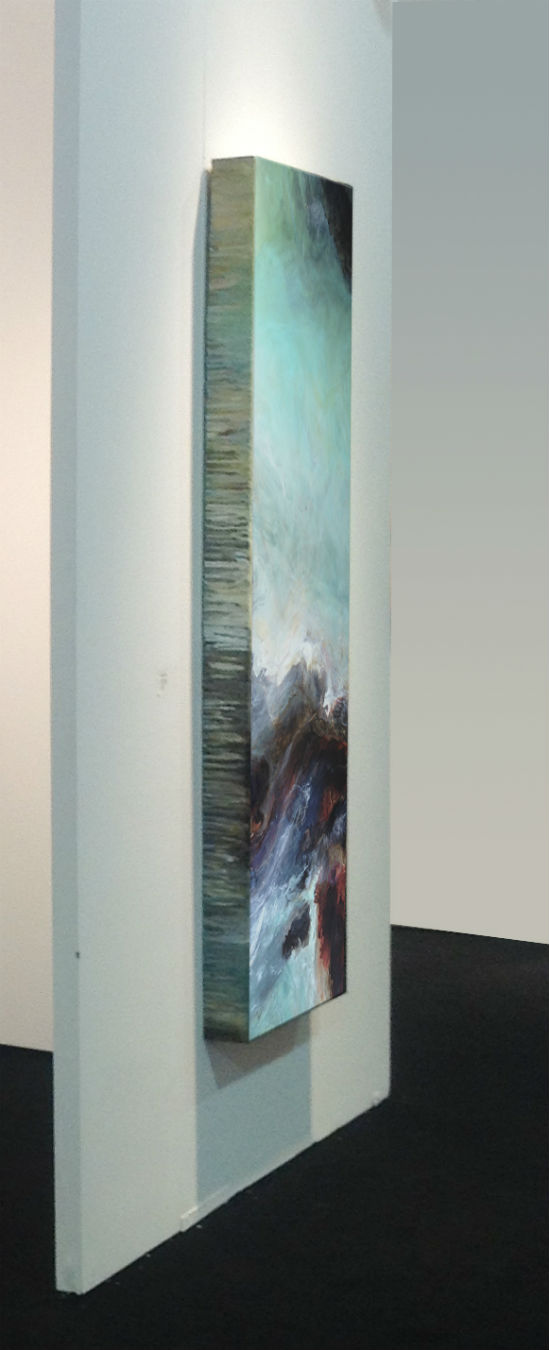At her Kitsilano home, painter Norah Borden has quite the perch from which to observe the local climate. Clouds sweep by, raindrops kiss the glass of her sliding patio door, and in the distant horizon, ocean meets mountain. Her white studio is set with a spinning table so she can paint flat and create the dreamy earthscapes of her Planet Earth series, on display in a new exhibit at Science World from June 17 to September 6.
The show, titled “Planet Earth: Paintings by Norah Borden”, is in collaboration with Urthecast, a Vancouver-based company working with leading space agencies to develop the world’s first real-time platform of earth. “I asked to collaborate with them because I saw a nice intersection with earth and science,” explains Borden. “They have ultra HD cameras on the International Space Station that will be streaming a near-live feed alongside the paintings. We are doing similar things but in totally different ways.”
And while it may seem simple enough on the surface, to explain Borden’s series away as a mere play on these extreme aerial landscapes would be shortchanging her. Planet Earth is zoomed yet distant, soft yet jagged; and, like Edward Burtynsky before her, Borden is making a real commentary on the significance of the spaces we occupy.
“My earlier series was all about illusions and seeing from your own perspective,” she says. “Seascapes were moody and coloured; you colour your perspective on the world through your own emotions and thoughts.” For Borden, the collapse of systems surrounding the recession in 2008 struck a nerve, and in the following year she started to challenge her own assumptions and illusions of the world. “That was really the basis for the Planet Earth series,” she explains. “I started to paint unconsciously. It was more about looking down at the planet and realizing how everything is interconnected and has a resonating effect. I really just want to look above the divisive battles out there and have people realize that we’re all in this together. We’re all breathing in the same air, using the water, it’s all getting recycled.”
While the perspective is conceptual, Borden is walking the walk. She works with layers and layers of acrylic. The pigment spills off into a trough system she crafted to catch the runoff, the resulting colour is a soft grey that carries a similarity through each piece, though each has its own recognizable complexities. Blue Water has a different feel than The Reef, the latter of which has an acidic quality that Borden explains as the real deterioration happening in our oceans. Satellite is a marriage between earth and space, while Tundra is at once soft and cold. Up close the pieces are brimming with exceptional detail, including intricate marbling as a nod to the geode. “I wanted it to feel like rock, elemental,” she says. “I want it to feel mirco and macro all in the same piece so that when people see multiple perspectives, maybe they have a better truth.”
For the Ontario native, everything is at the crux of transition—Borden recognizes the resilience of the earth and its inherent ability to adapt, something that she hopes its inhabitants pick up on, too. “We might lose trees and the climate may change, but the earth will keep going,” she says. The hope is we can, too, perhaps with a new perspective.












